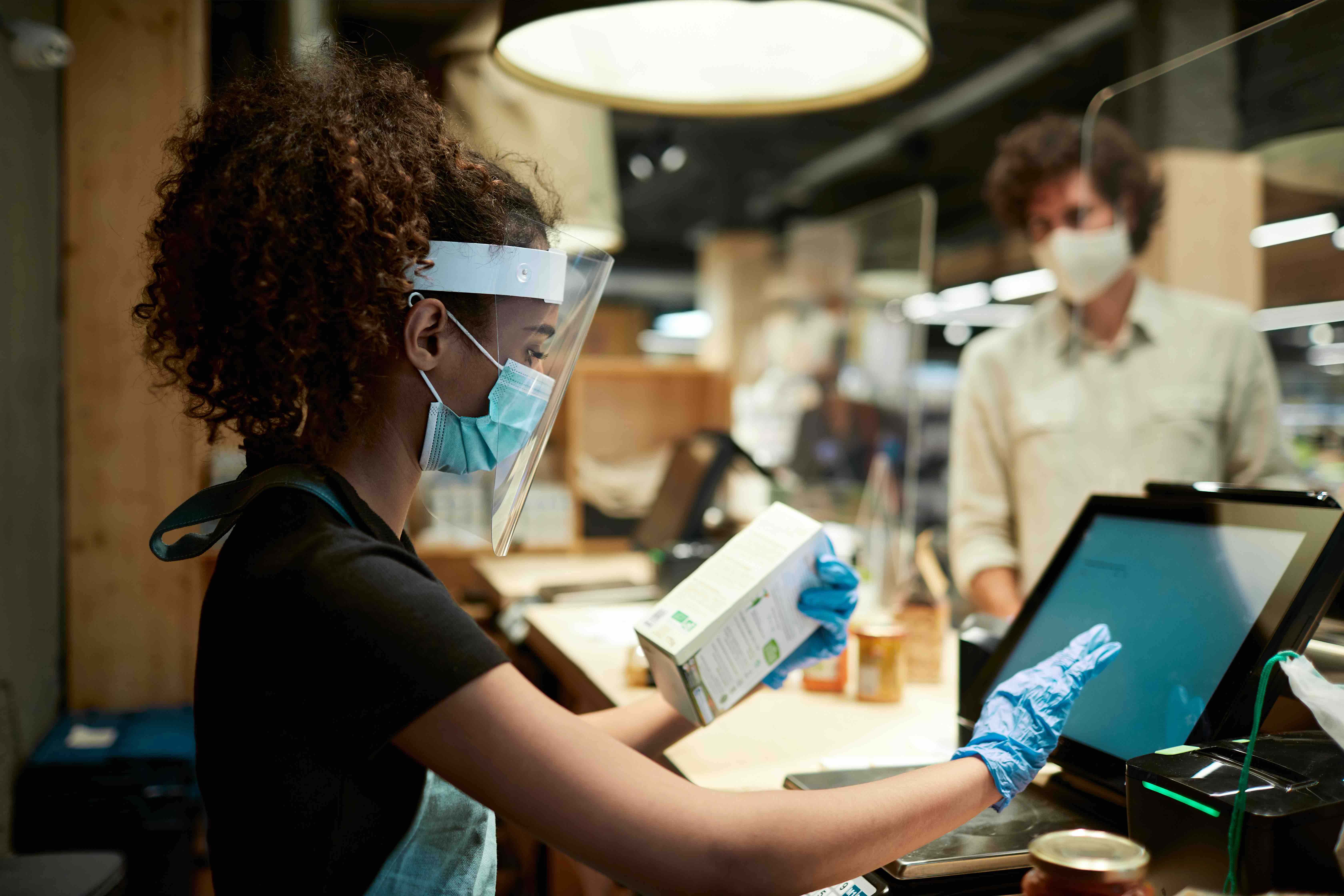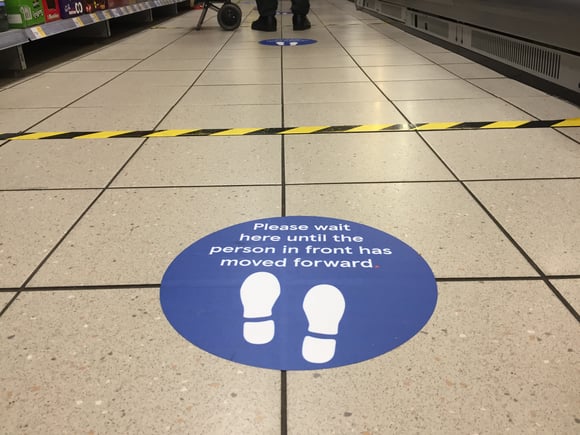5 ways rotas will change as stores reopen amidst COVID-19
by Rotageek on 18 May 2020

Soon the high-street will reopen and shoppers, with their pent up desire to go shopping, will return. This is evidenced in China where society has slowly regained some form of normality. While we are yet to see the full extent of the long-standing effects on society, one thing is certain: consumer behaviour has changed and businesses need to adapt.
Although the shift to online shopping might have indicated a significant detour in our understanding of the 'Customer Journey' a study carried out on behalf of Retail Touchpoints revealed that while consumers stepped up their online shopping during the initial lockdown, 39% were unable to find everything they wanted on eCommerce sites, and 25% were not receiving deliveries in a timely fashion. Encouraging signs from some APAC countries now shows that in-store footfall is rising to pre-COVID-19 levels as lockdown measures ease and case counts drop.
In the UK, most of our high street retail customers are planning for their phased reopening and thinking through how they can best serve their customers in a post-COVID-19 world both in the short and long term. Take social distancing measures for example. We've been thinking about how these measures will interrupt the business operations of brick and mortar establishments, and the ways in which rota managers will need to incorporate social distancing guidelines into their everyday operations for the foreseeable future.
One thing is for sure; the new normal may be very different from what we're used to and this will bring change to the rota maker and create new employee scheduling challenges. With this in mind, we've compiled our top 5 ways that schedulers will need to react, adjust and reinvent retail rota management in their own businesses.
5 ways retail rotas will change as stores reopen
(1) Preventing the spread of infection
Retailers have a new commitment to ensure they’re protecting their employees from spreading and contracting COVID-19. We have seen our retail clients effectively split teams into small cohorts to prevent unnecessary employee interaction and ultimately, the spread of the virus throughout an entire team. If a team member does report sick, only 1 cohort would need to self-isolate and the day to day operation of the business should be able to continue after sufficient cleaning.
Cohorts work best when an entire shift is designated to only one group of employees - so that the business can continue to run as smoothly as possible with less risk of employee contraction and infection.
(2) Increasing the focus on operational efficiency!
Operational efficiency will undoubtedly become a real focus and it’ll become more important to have team members on the most value-adding, customer-facing work and automate as much as possible outside of that. Businesses will need to move employees to new contract hours arrangements and perhaps take advantage of part-time furlough options too. What hours you do have to spend will need to be split fairly amongst the team as best you can. Where people are working different hours week to week and are more aware of every hour worked, using an intuitive time and attendance system could be very important to accurately track individual hours worked and give both payroll and employee accurate visibility of hours worked. We’ve seen a dramatic increase in T&A enquiries in the last 2 months from current and new customers.
As trade levels will be unpredictable (hopefully returning to normal at some point), you’ll need to be making quick changes, notifying your team easily and have a simple system to fill more shifts at short notice. We are wondering if the gig-economy worker-on-demand- businesses will see a real increase in usage by businesses requiring on-demand skilled team members at short notice and unable to be filled by a smaller core team!
(3) Roles we never knew we needed will become vital
We’ve all seen the friendly security guard monitoring the capacity at the pharmacy or the smiling trolley cleaner at the supermarket during the last few months. Tasks that we never had to plan for will suddenly need to be organised and evident on all rotas. These include hosting, queue management, cleaning and delivery coordination which will become features on many rotas now and in months to come. Not only will you want to be able to ensure you are covering those tasks during all trading hours, but you will also want to be able to centrally audit that each store is properly assigning these tasks to remain compliant with national guidelines.
(4) Implementing social distancing into your customer journey
We’ve always heard people talk of service or customer experience being the most important part of a retail or hospitality journey, but for the near term at least, safety will likely rise to the forefront as a customer’s greatest concern when choosing where to go! For example, how many of your tills can you safely operate when they are all right next to each other just an elbow-width apart? We will have to think creatively about how we can maximise sales in an environment when packing people into small spaces won’t be possible right away (or perhaps even ever again!) In larger stores, certain services might remain closed (think changing rooms, beauty counters etc) and team members could be re-trained to take on new duties as well. Ensuring compliance and monitoring of these safety measures in a large estate will be important and will surely be a large focus of customer social media focus in the same way that a rude waiter elicited angry tweets in days gone by!

(5) Implementing social distancing into your team operation.
It’s obviously not just your customers who will need to respect social distancing at work. The team might have to make real changes to the way things used to be and rotas might have a few new aspects for your teams too!
You might want to plan longer shifts to limit the number of people commuting during rush hours/shift change times and also restrict how many people are in the business at any point. Scheduling staggered start times (and therefore finish times) to help with commuter crush & staff room team member overlap would also be an idea. Most businesses actively have chosen to let managers direct breaks for team members up to now, but in a world where small groups taking breaks together when trading levels die down won’t be advisable, planning & staggering breaks to properly distance your team throughout their shift will surely need to become a feature on your rota. It seems that people will also be advised to not travel to work in the clothes they wear once on shift and so extra time should be scheduled for people to get changed when they arrive at work in a safe, distanced environment.
We mentioned Time & Attendance tracking earlier, but it is worth mentioning that the historic on-premise thumb scanners or clock in devices would be much better replaced by facial recognition scanning or punching in/out on your own device to remove another contamination point in businesses going forward.
In Summary, we know that there is a lot of advice going around at the moment, but we are trying to think quickly in this changing environment and offer up some practical advice for rota-builders on the ground. We are working closely with our customers to ensure they can achieve all the above in their rotas immediately and you can read more about how that works in Rotageek here ⬇️ in our short e-book!🚀
- Quick links
- Log In
- Book a Demo
- Help Centre
- Products
- Digital Scheduling
- Autoscheduling
- Forecasting
- Company
- Our Story
- Careers
- Blog
- Privacy Policy
